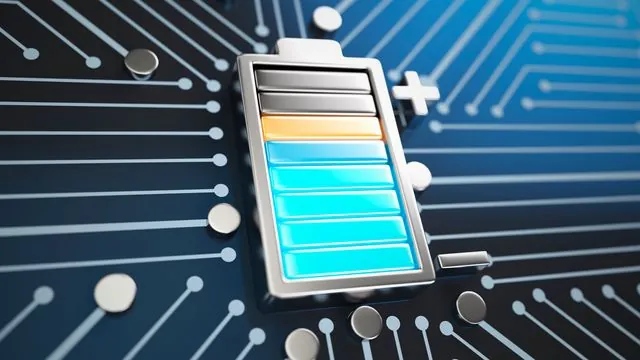
Revolutionizing Battery Life: New Imaging Method Could Propel Lithium-Metal Batteries Forward
2025-06-16
Author: Yu
Lithium-metal batteries are on the brink of a breakthrough that could change the way we power our devices forever. With the potential to hold twice as much energy as conventional lithium-ion batteries, these power sources promise to eliminate the constant dread of a dying battery. However, their journey to market has been hindered by a major roadblock: limited recharges.
But hold on! A groundbreaking study from researchers at the California NanoSystems Institute at UCLA has unveiled an innovative imaging technique that captures the intricacies of lithium-metal batteries while they charge—offering unprecedented insights into their inner workings. This new method, known as electrified cryogenic electron microscopy (eCryoEM), provides clarity at a scale smaller than the wavelength of light.
The findings, published in the journal Science Advances, could pave the way for the next generation of batteries and may even shift the competitive landscape dominated by Chinese manufacturers. By advancing battery technology in the U.S., researchers believe they can position the country at the forefront of this emerging market. But the implications of this research reach beyond batteries, potentially unlocking new understandings in fields as varied as neuroscience.
Why This Research Matters
The urgency of this research stems from China's overwhelming control over the lithium-ion battery supply chain, producing nearly 80% of the world's batteries. As America races to catch up—especially in electric vehicles and sustainable energy storage—lithium-metal batteries present a unique opportunity. With the ability to potentially double energy density, overcoming the cycling stability issue is crucial.
A Game-Changing Method of Investigation
eCryoEM stands out from traditional cryogenic techniques by examining electrochemical reactions in real-time rather than just postmortems. By cooling batteries in liquid nitrogen while they charge, researchers can capture their dynamic processes. This method allows them to create a 'flipbook' animation of changes, revealing how corrosive layers form and evolve as lithium interacts with electrolytes.
Surprising Discoveries—The Key to Better Batteries?
The team’s exploration of electrolyte chemistries revealed significant differences in rechargeable capacities—one type lasting about 100 cycles versus only 50 for another. Their hypothesis revolved around how effectively these electrolytes manage corrosion, which can stifle battery efficiency. They found that thick corrosion layers limited electron diffusion significantly in lower-performing electrolytes.
Even more surprising, they discovered that the key factor in battery longevity is not just how fast electrons move but how reactive the electrolyte is. This breakthrough suggests that enhancing the inertness of the liquid electrolyte could dramatically extend battery life.
Broader Implications Beyond Batteries
Research into eCryoEM could reshape not just battery technology but also applications in materials science and biology. The implications stretch far, with researchers aiming to understand molecular processes in supercapacitors and even investigating brain cell functions using similar techniques.
With funding from the National Institutes of Health, researchers are exploring electric signals in brain cells to decipher disease models and potential therapies. This innovative approach, championed by UCLA's interdisciplinary teams, exemplifies how scientific collaboration can foster groundbreaking advancements.
As the race to revolutionize how we store energy continues, this cutting-edge imaging technique holds the key to unlocking the full potential of lithium-metal batteries and beyond, marking a new era in clean energy technology.




 Brasil (PT)
Brasil (PT)
 Canada (EN)
Canada (EN)
 Chile (ES)
Chile (ES)
 Česko (CS)
Česko (CS)
 대한민국 (KO)
대한민국 (KO)
 España (ES)
España (ES)
 France (FR)
France (FR)
 Hong Kong (EN)
Hong Kong (EN)
 Italia (IT)
Italia (IT)
 日本 (JA)
日本 (JA)
 Magyarország (HU)
Magyarország (HU)
 Norge (NO)
Norge (NO)
 Polska (PL)
Polska (PL)
 Schweiz (DE)
Schweiz (DE)
 Singapore (EN)
Singapore (EN)
 Sverige (SV)
Sverige (SV)
 Suomi (FI)
Suomi (FI)
 Türkiye (TR)
Türkiye (TR)
 الإمارات العربية المتحدة (AR)
الإمارات العربية المتحدة (AR)